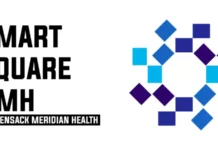The work of a medical assistant is vitally essential for the care and well-being of many people. Medical assistants can work in various settings and deal with an eclectic array of responsibilities. It can make it difficult for medical assistants to gain a comprehensive view of what constitutes the everyday life of a medical assistant. This article aims to provide insight into aspects of this daily life by relating examples from various settings and situations where medical assistants may find themselves.
Roles of Medical Assistants
Medical assistants are often confused with medical aids. While the duties of the two professions may vary, the primary difference is that medical assistants are licensed professionals, while medical aides perform tasks that do not require a license. The following are some common everyday situations that medical assistants experience. These situations are not intended to be exhaustive but provide some insight into the types of work that medical assistants perform regularly.
1. Patient Care Technician
In this role, medical assistants provide various direct patient care services such as taking vital signs, taking emergency measures, and preparing patients for examination and treatment. They also administer prescribed medications, dress wounds and change bandages, collect and prepare laboratory samples, and assist physicians during inspections. They are instrumental in the process of treating patients. These include making ice packs, checking and resetting dialysis machines, giving IV drugs and nutrients, assisting patients during therapies, preparing bed baths, and dressing wounds.
2. Front Office Assistant
This role has evolved from its original version as a mere receptionist and has become a highly skilled medical assistant. In this role, medical assistants are responsible for answering telephone calls, processing insurance claims, scheduling patient appointments, and communicating with the billing department. Medical assistants also assist patients by filling out admission forms for new patients or transferring old records to new departments.
3. Medical Records Clerk
Medical records clerks take all incoming patient records, provide treatment information and prepare billing statements for medical insurance companies. They are responsible for ensuring that all confidential information is safe to protect the care providers, patients, and insurance companies.
4. Medication Administration
One of the most common tasks for a medical assistant is administering medications to patients. They can do this in hospitals, long-term care facilities, or doctor’s offices. The procedures for administering medication vary widely, from surgery jobs in Atlanta to pediatrics jobs in Chicago, and it depends on the patient, the medicine, and the administration circumstances.
5. Clinical Assistant
Medical assistants must provide direct patient care in doctor’s offices and other situations. In this role, medical assistants may find themselves doing various things. Some of the more common things they might do include taking medical histories, examining patients, dressing wounds and applying dressings, inserting catheters, drawing blood samples, and administering injections.
6. Community Medical Assistant
Medical assistants may provide health education, perform lab tests, deliver medications and supplies to health care facilities, and take vital signs. They also play a crucial role in educating the public on health issues, helping at-risk populations obtain needed healthcare services, and working with community agencies to provide outreach care to at-risk populations.
7. Medical Secretary
They combine this role with administrative tasks. Medical secretaries work within a medical office and perform many of the administrative functions for the offices. They may also perform billing, word processing, dictation, and other related parts. They may also perform these duties remotely as a virtual medical secretary.
8. Patient Transport
In this role, medical assistants transport patients from one location to another. They often transport patients to and from examination rooms, operating rooms, and physical therapy areas. They may also transport patients home after treatment.
9. Housekeeping
Medical assistants may find themselves responsible for performing basic housekeeping tasks related to the medical office or clinic in which they work. These tasks can include changing bedding and cleaning linens, maintaining medical office supplies and equipment such as sick call trays, making ice packs, taking out the trash, or organizing inventory items.
Conclusion
Medical assistants can find themselves in many different roles–all of which can give them a greater sense of having a job that has meaning and contributes to their health and well-being.



































































